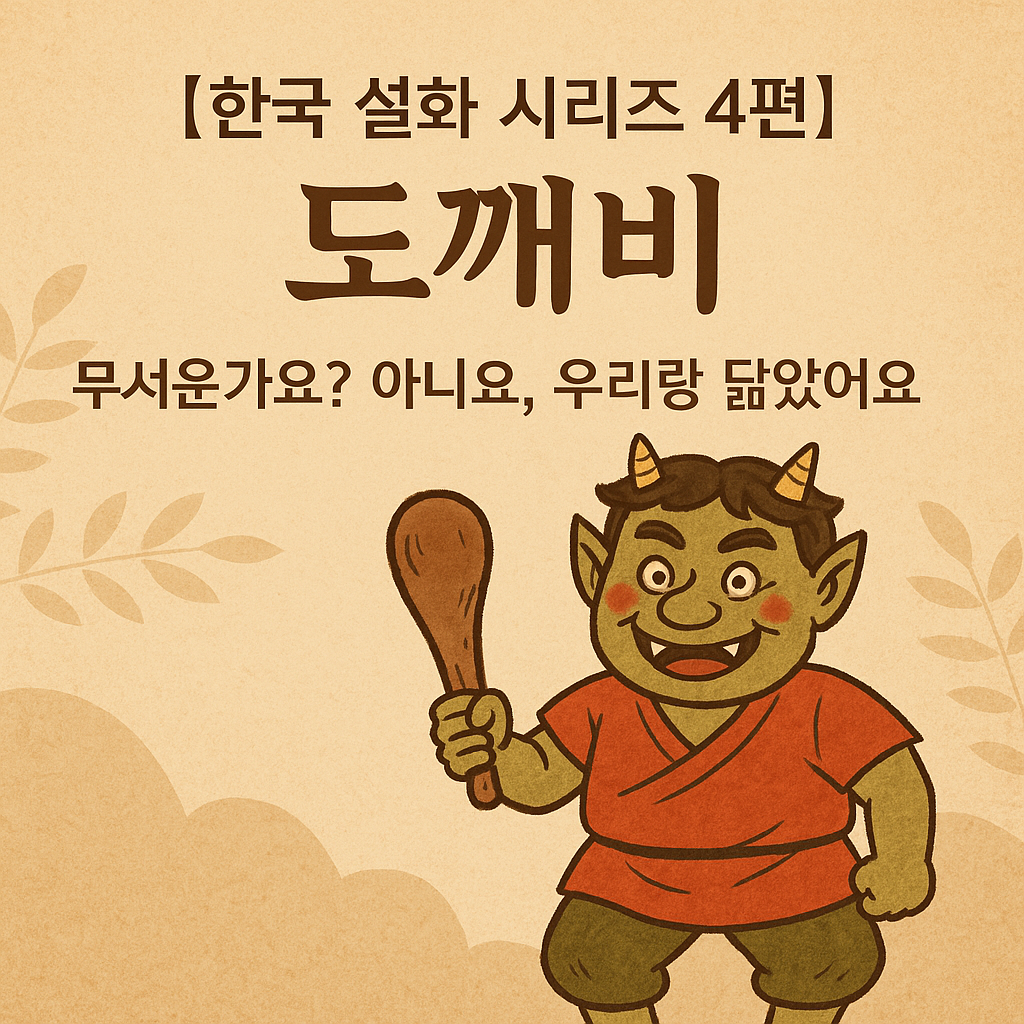🍂 Korean Folktale Series 4

“The Mischievous Goblin”
(도깨비 · Dokkaebi)
🕰️ 1. The Story
In Korean folklore, Dokkaebi are not ordinary ghosts or demons but unique, goblin-like beings. They are said to arise from inanimate objects that have absorbed spiritual energy, such as an old broom, a worn-out pot, or even a farmer’s plow.
Dokkaebi are best known for their mischievous tricks. They often appear at night, challenging people to wrestling matches, teasing greedy travelers, or playing jokes on those who lack humility. Yet, they are not purely evil. To kind and respectful people, they sometimes grant treasures or good fortune.
The most famous possession of a Dokkaebi is its magical club (Dokkaebi bangmangi), which can summon anything the owner desires. However, greed often leads to one’s downfall, as the Dokkaebi punish those who abuse their generosity.
🪄 2. Meaning & Lesson
The tale of the Dokkaebi reflects:
- The balance between mischief and morality.
- A reminder that greed leads to ruin, while kindness invites blessings.
- The idea that supernatural beings mirror human virtues and flaws.
👀 3. Example from Life
- A greedy person who takes advantage of others may face unexpected consequences.
- Someone humble and respectful often receives help in return.
- In modern life, the narrative reflects how misuse of power or luck can backfire.
🌏 4. Similar Tales Around the World
- 🇯🇵 Japan: Oni (demons), though usually more fearsome, share the trait of punishing the wicked.
- 🇪🇺 Europe: Goblins, elves, and leprechauns often play tricks on humans but also guard hidden treasures.
- 🇮🇳 India: Mischievous spirits in folklore who test humans’ greed and humility.
💬 A Warm Saying
“Luck smiles on the humble,
but mischief follows the greedy.”
📌 Note
This is a creative cultural content from the Misojieum Story Blog (kor-telling.com).
Please do not copy without permission.
Sharing is welcome with proper source citation.
'Korean Folktales & World Folktales' 카테고리의 다른 글
| Korean Folktale : The Story of the Green Frog (0) | 2025.10.06 |
|---|---|
| Korean Folktale : The Story of Jacheongbi (0) | 2025.10.06 |
| Korean Folktale : The Snail Bride (0) | 2025.10.05 |
| Korean Folktale : The Honest Woodcutter (0) | 2025.10.05 |
| Korean Folktale : Heungbu and Nolbu (0) | 2025.10.04 |
| Korean Folktale : The Woodcutter and the Heavenly Maiden (0) | 2025.10.03 |
| Korean Folktale : Baridegi the Abandoned Princess (0) | 2025.10.03 |
| Korean Folktale : The Tale of Sim Cheong (0) | 2025.10.01 |